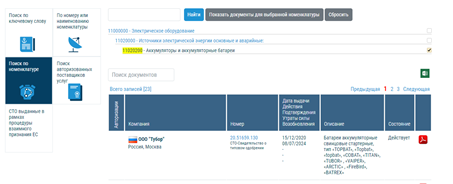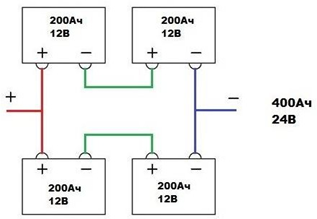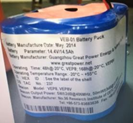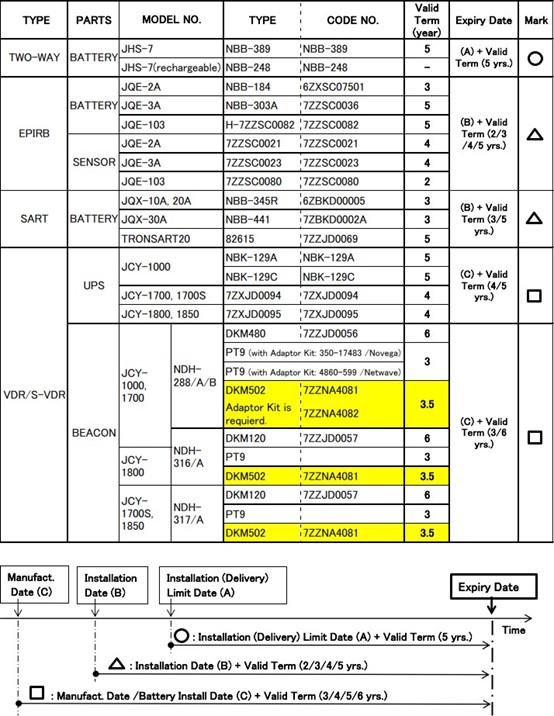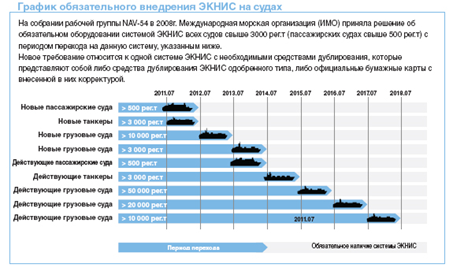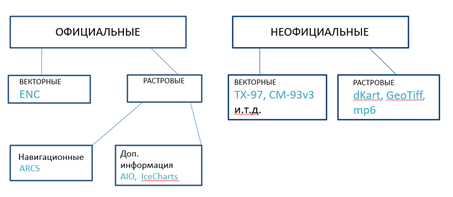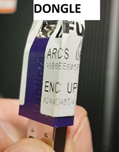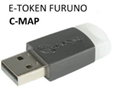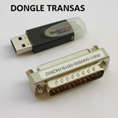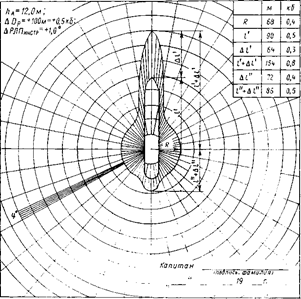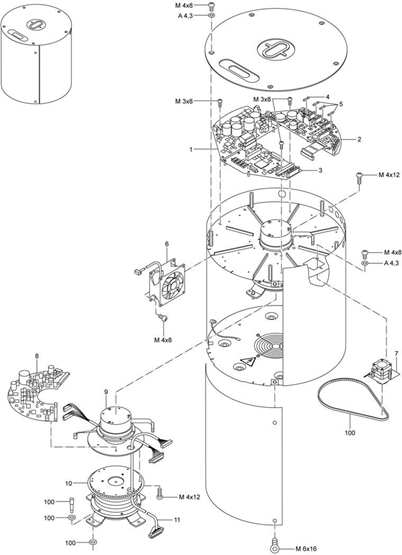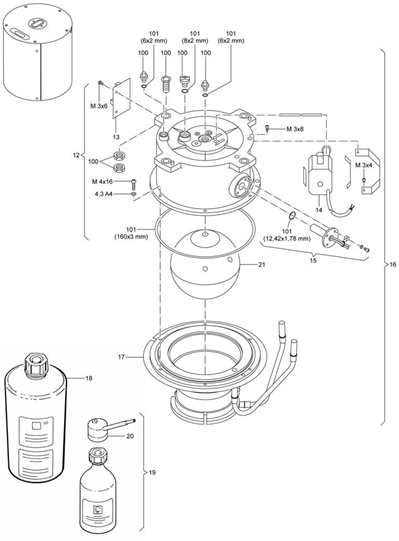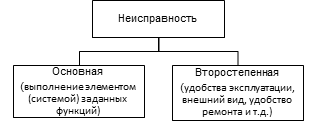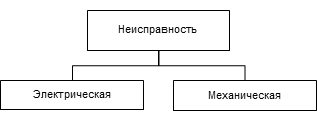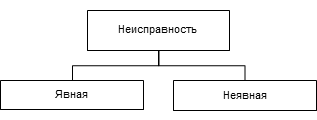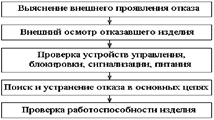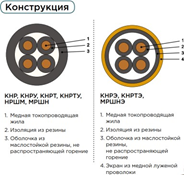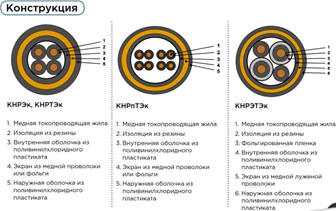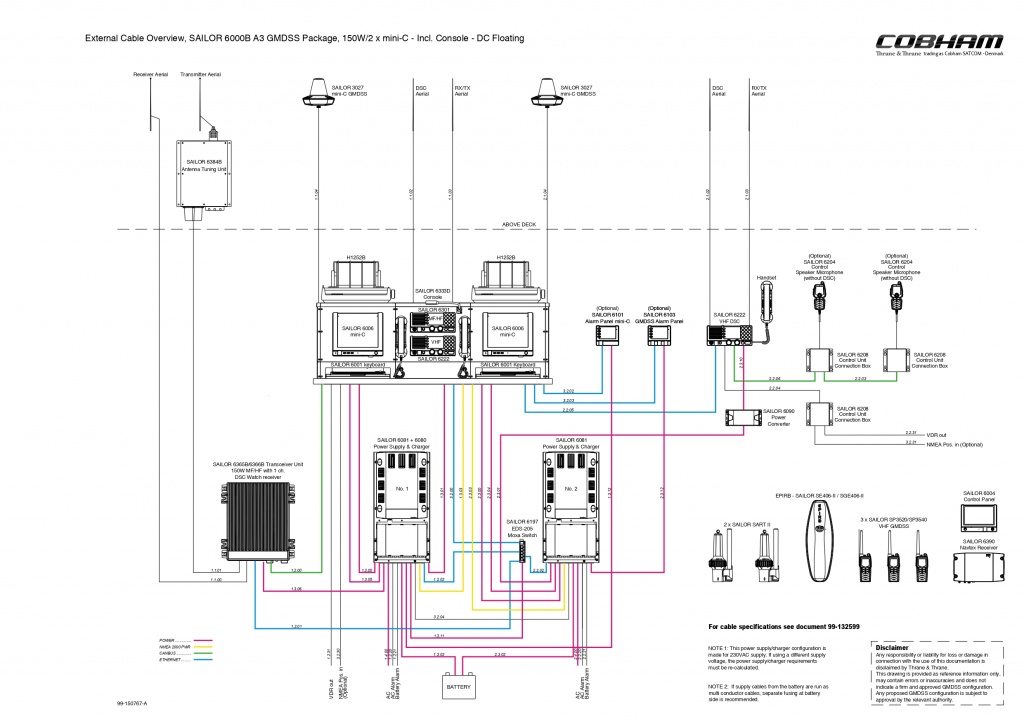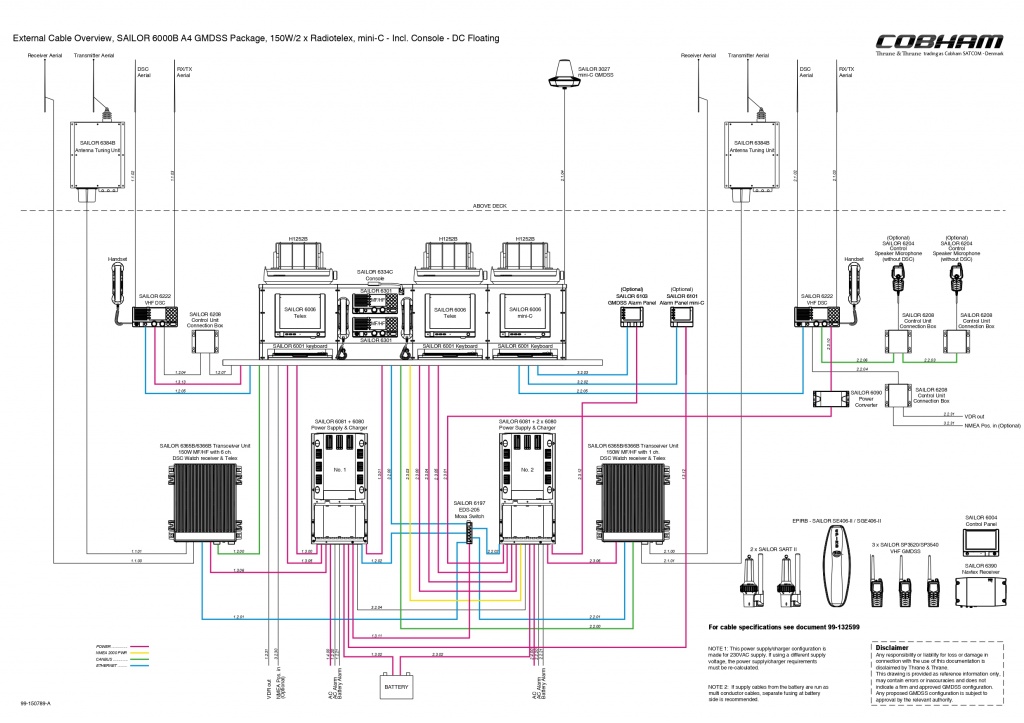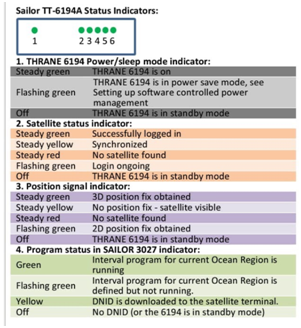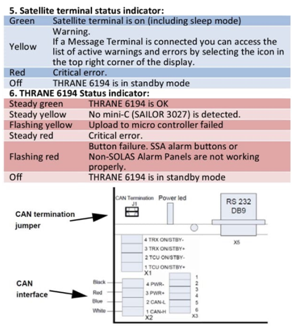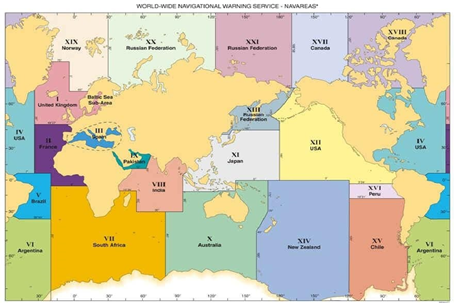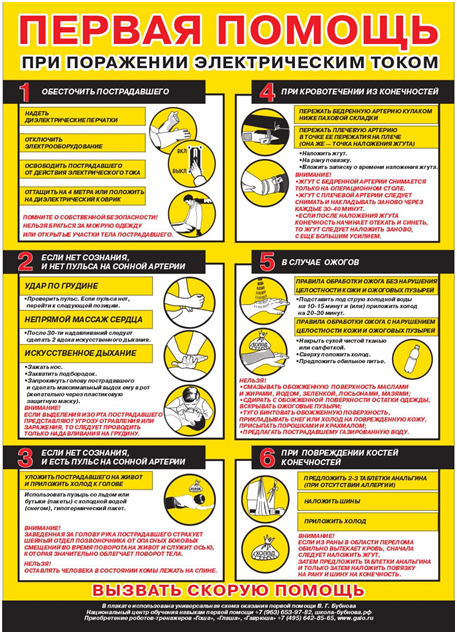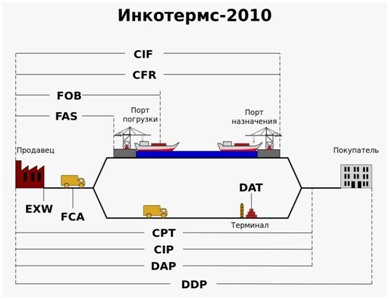MAIN MAGNETIC COMPASS is a magnetic compass that is independent of any ship's source of electrical power and provides determination of the ship's course and the presentation of readings to the main steering station.
MAGNETIC SPARE COMPASS – a backup magnetic compass that provides the functions of the main magnetic compass and is interchangeable with it.
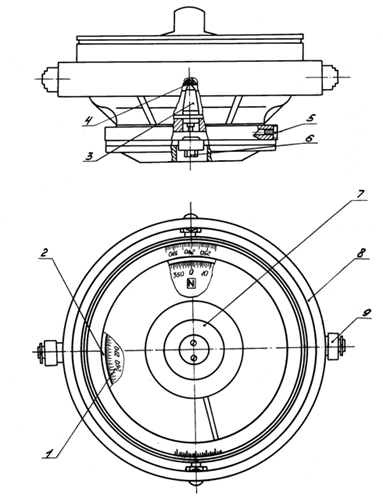
Typical view of a compass bowl, using UKPM-M as an example
1 – MCE; 2 – heading indicator; 3 – column; 4 – hairpin;
5 – plug for refilling; 6 – plug; 7 – illumination unit;
8 – cardan suspension; 9 – roller bearings.

Typical view of a binnacle with a pot installed, using the example of the KM145-S compass
1 – optical device
2 – remote control
3, 14 – backlight brightness control
4, 6, 13 – switch
5 – indicator
7 – binnacle
8 – latitudinal deviation compensator
9 – cover
10 – deviation device
11 – locking screws
12, 31 – lamps
15 – quarter deviation compensator
16, 19 – bracket
17 – cap
18, 24 – scale
20 – toggle switch
21 – oil seal
22 – base
23, 39 – handles
25, 26 – lenses
27 – protective glass
28, 29 – windows
30 – course converter
32, 37 – connector
33 – deviation device
34 – box with silica gel
35 – heating glass
36 – holes
38 – mirror
40 – electromagnetic deviation compensator.
binnacles
Depending on the type of vessel on which the binnacle is installed, one of two types can be used: A1 or A2. The characteristics of both types are given below.
Combinations of magnetic compasses and binnacles are shown in the table:
|
Magnetic compass
|
Binnacle
|
|
Class A
|
Type A1
|
Type A2
|
|
Class B
|
Type A1
|
Type A2
|
Binnacles type A1
The Type A1 binnacle must be of such a height that the magnets of the compass sensing system are at least 1 m above the bottom surface of the binnacle cushion on the deck.
Binnacles type A2
Type A2 binnacles are used in navigation when the design of the vessel excludes the possibility of installing a full-size binnacle.
Lighting
The binnacle must have suitable arrangements for illuminating the horn and traverse from the ship's electrical network and from an emergency light source. In the binnacles of reflective and projective compasses, a clear image must be visible from the helmsman's position.
A device must be provided to adjust the intensity of light from the ship's electrical network.
Electrical lamps, fittings and electrical wiring must not affect the sensitive system.
Accuracy of bow and stern marks
To ensure accuracy during installation, bow and stern marks must be provided and must be within 0.5° (1.0° for Class B compasses) from the axis of the bow and stern gimbal trunnions.
Transmission of course readings from the card in the bowler can be carried out optically using an optical periscope, or using an optical light guide (in cases where the binnacle and the receiving screen of the periscope are not located coaxially), as well as using an induction (or magnetic) sensor. Receiving course data can be broadcast to repeaters using course broadcast devices.
To ensure the ability to read course readings in any lighting conditions, the compass bowl is backlit
Liquids CASSENS & PLATH:
· 39012 (alcohol): Jupiter, Venus, Merkur
· 13310 (alcohol-free): Cassens type 11, 12, 21 (reflecta), SAURA, KEIKI
MAGNETIC COMPASS
Requirements
The magnetic compass must provide an indication of the ship's course with accuracy:
±1° on the move in the absence of pitching;
±5° when rocking in all directions up to ±22.5° with a period of 6 - 15 s.
The magnetic compass card must provide the ability to take readings with an accuracy of 0.5°.
The division value of the card should be no more than 1°.
Stagnation of the magnetic compass card with the horizontal component of the induction of the Earth's magnetic field at the location where the compass is installed H, µT, and ambient temperature
±20±3 °C should not exceed (3/Н)° after the card deviates from the magnetic meridian by ±2°.
The magnetic compass must be provided with appropriate means to ensure the stability of the card during ship vibrations and maintaining the normal position of the vertical axis of the compass bowl under operating conditions.
The bowl of a gimbaled compass must remain horizontal when the binnacle is tilted up to 45° in any direction. The pot must remain free when the pot is tilted in any direction at an angle of at least:
10° - for a compass with a gimbal;
30° - for a compass without a gimbal.
A magnetic compass must have devices to compensate for constant, semicircular, quarter, roll and latitudinal deviation.
If the ship is equipped with a demagnetization device, the magnetic compass must have an electromagnetic deviation compensator.
Each device must provide compensation for the corresponding deviation with an accuracy of +0.2°.
The design of the devices provided for in 5.2.6 must provide such deviation compensation that the residual deviation values do not exceed ±3° for the main magnetic compass and ±5° for the spare one.
A magnetic compass must have a binnacle and electric illumination of the card, sufficient for clear visibility of the card divisions. It must be possible to adjust the light intensity.
Electrical lighting of the compass card must be provided from the ship's power plant and an emergency source of electrical energy.
Power from an emergency source of electrical energy can be replaced by power from a battery.
The height of the main compass binnacle must be such that, together with the cushion on which it is installed, the glass plane of the compass bowl is at a height of at least 1300 mm from the deck. The highest installation height of the compass is not regulated, but in all cases it should not exceed the value that ensures ease of use of the compass.
The main compass must be equipped with a direction finder, which must provide direction finding of landmarks, objects and celestial bodies visible from the ship with a reading accuracy of ±0.5°.
Direction finders of a new design must provide a direct bearing reading.
It must be possible to clearly take a reading from a magnetic compass card or optical periscope at a distance of at least 1.4 m, both in daylight and in artificial light. The use of magnifying agents is allowed.
A magnetic compass with remote electrical transmission of heading must meet
requirements of 5.2.1 - 5.2.10 rules and, in addition, ensure the transmission of information about the true course to other navigation equipment and repeaters (see also 5.10 rules).
Rules for equipment of sea vessels V-62
A magnetic compass with remote electrical transmission of heading may consist of:
.1 a magnetic compass that does not require a sensitive element of electrical power for operation and is equipped with a device for remote electrical transmission of heading.
If the remote electrical transmission of heading complies with the requirements of 5.10 rules, such a compass can be used as the main magnetic compass;
.2 an electromagnetic compass requiring electrical power to operate the sensing element and equipped with an electronic device for generating a compass course with corrections and transmitting it to other navigation equipment.
This compass can be used on ships as an additional magnetic compass to the main compass.
The magnetic compass must be equipped with devices to compensate for deviation within the following limits:
.1 vertical component of the ship’s magnetic field induction at the compass installation site, causing heel deviation, _ up to +75 µT;
.2 coefficient A - up to ±3°;
.3 coefficient B - up to ±(720/N)°;
.4 coefficient C - up to ±(720/N)°;
.5 coefficient D - up to ±7°;
.6 coefficient E - up to ±3°,
where H is the horizontal component of the induction of the Earth's magnetic field at the location of the compass, µT.
The established positions of the regulators of electronic deviation compensation devices must be clearly marked and remain in effect at all times.
The deviation compensation device must be protected from unauthorized
access.
A magnetic compass with remote electrical heading transmission must have at least one output channel for transmitting heading to other navigation equipment in accordance with IEC 61162.
A magnetic compass with remote transmission of compass heading must remain operational during the following changes in the ship's movement:
circulation at angular speed up to 68/s;
yaw with a period of 10 - 20 s and the largest deviation from the course by +5°.
The design of a magnetic compass with optical remote transmission of card readings must provide on the screen a direct reflected image of a sector of the card’s scale with clearly visible degree divisions on an arc of at least 30°, as well as a heading line mounted in the compass casing.
It is recommended to provide a device for obtaining an image of the card scale from the stern and bow sides of the periscope.
The length of the periscope of the optical path of a magnetic compass with optical remote transmission of card readings must be such that when installing the compass on a cushion, taking into account the passage of the periscope pipe through the deck of the ship, the screen could be installed at eye level of the helmsman.
A device must be provided to adjust the height of the screen 100 - 150 mm up and down from the middle position.
The screen must be equipped with a means that protects it from bright sunlight or other light that can cause the image on the card screen to become overexposed. The image on the screen must be clearly visible during the day and at night.
The design of the optical path and screen must be such that the image of the sector of the card’s scale remains clear and clear during visual direction finding and with the compass cover closed.
Rules for the equipment of sea vessels V-63
A device for adjusting and fixing the screen position must be provided.
The optical path must be waterproof (IP56). Measures must be provided to prevent sweating of the path and condensation of moisture in it, and easy access to the optical system for its maintenance must be ensured.
The boat magnetic compass must meet the following requirements:
.1 the division value of the compass card must be 1°, 2° and no more than 5° depending on the diameter of the card;
.2 stagnation of the compass card under conditions should not exceed (9/N)°;
.3 illumination of the card must be provided in accordance with 6.13.8.1.5, Part II
"Life-saving equipment";
.4 a device must be provided for attaching the compass to the boat, as well as a case for storing it;
.5 the diameter of the card must be sufficient for normal reading.
The composition of navigation instruments, devices and instruments that must be installed on the ship or with which the ship must be equipped is determined depending on its gross tonnage, taking into account the navigation areas and the purpose of the ship in accordance with Table. 2.2.1. Definitions of navigation areas are given in 1.2 of Part I “Regulations on Surveys”.
Table 2.2.1 (regarding magnetic compasses)
|
No.
p/p
|
Navigation equipment
|
Quantity for ships of gross tonnage
|
Explanations
|
|
<150 1
|
5150 1
|
5300
|
5500
|
53000
|
510000
|
5 50000
|
|
1
|
Main magnetic compass 2
|
1
|
1
|
1
|
1
|
1
|
1
|
1
|
The compass kit must include a direction-finding device that provides bearings along a 360° arc of the horizon and is independent of any source of electrical energy
|
|
2
|
Magnetic spare compass
|
|
1
|
1
|
1
|
1
|
1
|
1
|
Should be interchangeable with the main magnetic compass. Not required if full duplication of the main magnetic compass is ensured (see note 6)
|
1 The composition of navigation equipment for passenger ships with a gross tonnage of less than 500 should be determined according to column 3 (5300) of the table, and the requirements of paragraphs 15 and 20 of the table should be taken into account.
2 Remote transmission of the main magnetic compass readings to the main steering position must be provided.
2. On ships, the construction contracts of which were signed on or after January 1, 2007, a gyroscopic compass is allowed to be used as a spare magnetic compass, which must be powered from the main and emergency sources of electrical energy, as well as from a transitional source that can be a rechargeable battery. Moreover, such a gyroscopic compass cannot be considered as required by paragraph 7 of this table in relation to ships with a gross tonnage of 500 or more.
2.2.1 Navigation equipment required according to table. 2.2.1 may be replaced by another, newly invented, developed or modernized, provided that it is equivalent in purpose, has the required or better operational and technical characteristics and is approved by the Register.
2.2.2 Navigation equipment not provided for in this part may be allowed to be installed on ships as additional equipment, provided that its placement and operation will not create difficulties when working with the main navigation instruments, affect their readings and reduce the safety of navigation.
Navigation equipment installed on the ship in addition to the main equipment provided in Table. 2.2.1, must be of a type approved by the Register and must meet the operational and technical requirements for the main equipment.
Magnetic compass with remote transmission of compass heading must remain
operable under the following changes in the ship's movement:
circulation at angular speed up to 68/s;
yaw with a period of 10-20 s and the largest deviation from the course at +58°.
5.2.16 Design of a magnetic compass with optical remote transmission of readings
The card must provide on the screen a direct reflected image of a sector of the card's scale with clearly visible degree divisions on an arc of at least 308, as well as a heading line fixed in the body of the compass bowl.
It is recommended to provide a device for obtaining an image of the card scale from the stern and bow sides of the periscope.
5.2.17 The length of the periscope of the optical path of a magnetic compass with optical remote transmission of card readings must be such that when installing the compass on a cushion, taking into account the passage of the periscope pipe through the deck of the ship, the screen could be installed at eye level of the helmsman.
A device must be provided to adjust the height of the screen 100-150 mm up and down from the middle position.
5.2.18 The screen must be equipped with a means that protects it from bright sunlight or other light that can cause the image on the card screen to become overexposed. The image on the screen must be clearly visible during the day and at night.
5.2.19 The design of the optical path and screen must be such that the image of the sector of the card’s scale remains clear and clear during visual direction finding and with the compass cover closed.
5.2.20 A device for adjusting and fixing the position of the screen must be provided.
5.2.21 The optical path must be waterproof (IP56). Must be
measures are provided to prevent sweating of the path and condensation of moisture in it, and easy access to the optical system is provided for its maintenance.
THE BOAT MAGNETIC COMPASS MUST MEET THE FOLLOWING REQUIREMENTS:
.1 the division value of the compass card must be 1, 2° and no more than 5° depending on the diameter of the card;
.2 stagnation of the compass card under the conditions set out in 5.2.3 should not exceed (9/N)8;
.3 illumination of the card must be provided in accordance with 6.13.8.1.5, Part II “Life-saving appliances”;
.4 a device must be provided for attaching the compass to the boat, as well as a case for storing it;
.5 the diameter of the card must be sufficient for normal reading.
RECOMMENDATIONS FOR INSTALLING MAGNETIC COMPASSES
1. It is recommended to install magnetic compasses in such a way that the distances from the center of the compass bowl to the magnetic materials included in the ship structures are no less than those given in table. 1-1 and 1-2.
2. All metallic magnetic materials should be positioned as symmetrically as possible relative to the magnetic compass.
3. The distance from the center of the magnetic compass bowl to the deck or ceiling made of magnetic materials must be at least 1 m, while it must be taken into account that the distances from the ends of bulkheads and deck decks in this case must be no less than those specified in table 1-1.
4. Magnetic compasses should not be installed at a distance less than 2 m from each other. For vessels less than 60 m in length this distance may be reduced to 1.8 m.
Table 1-1
The shortest distances from a magnetic compass to metal ship structures made of magnetic materials depending on the length of the vessel
|
Distance from stationary materials,
|
m
|
Distance from moving magnetic materials and materials with a changing magnetic field, m
|
With
|
|
|
|
|
|
|
|
Maximum length of the vessel,
|
m
|
|
|
|
|
|
|
|
up to 30
|
40
|
50
|
60
|
70
|
80
|
83 and
more
|
up to 30
|
40
|
50
|
60
|
70
|
80
|
90
|
100
|
110
|
120 and
more
|
|
1.5
|
1.75
|
2.1
|
2.3
|
2.7
|
2.9
|
3.0
|
2.0
|
2.2
|
2.4
|
2.6
|
2.9
|
3.1
|
3.4
|
3.5
|
3.7
|
4.0
|
|
Notes: 1. Movable magnetic materials are considered to be davits, fan pipes, doors, cargo booms and other movable elements of the ship's structure made of magnetic materials.
2. Materials with a changing magnetic field are exhaust pipes, chimneys and other heating devices made of magnetic materials. Ship pipe casings are considered immovable magnetic material.
|
Table 1-2
The shortest distances from a magnetic compass to metal ship structures made of magnetic materials for fishing vessels and vessels of a limited navigation area with a maximum length of up to 60 m
|
|
Distance from magnetic materials, m, depending on the maximum length of the vessel,
|
|
|
up to 20
|
thirty
|
40
|
50
|
60
|
|
1.1
|
1.3
|
1.5
|
1.7
|
2.0
|
RECOMMENDATIONS FOR DETERMINING THE “SAFE DISTANCE” FOR A MAGNETIC COMPASS
1. All shipboard equipment must be marked to indicate the minimum distance at which the equipment may be installed from the magnetic compass.
This smallest distance is considered a “safe distance” if the equipment’s magnetic fields do not distort the magnetic compass readings by more than 0.045 °/N, where H is the horizontal component of the Earth’s magnetic field, Oe (oersted).
2. The determination of the “safe distance” must be made for each type of equipment in the following three ways:
.1 by measuring the distance from the nearest point of the equipment to the center of the magnetic compass, when the magnitude of the deviation of the magnetic compass card as a result of the influence of the magnetic field created by the equipment will be equal to the value determined by the relationship given above. In this case, the equipment must be in the form in which it is usually installed on the ship;
.2 by measuring the distance after magnetizing the equipment in a field of 1.5 Oe created by direct current and additionally applying a stabilizing alternating current field of 18 Oe (rms value).
In some cases, the application of an alternating magnetic field is not permitted, as this may damage the equipment.
Equipment should be magnetized in such a way that the greatest result from magnetization is obtained (for example, along the longest axis of equipment made of magnetic material);
.3 by measuring the distance, as specified in 2.1, from equipment that is electrically powered and in operating condition.
3. The greatest distance that is obtained by comparing the three measurements above should be taken as the “safe distance”.
4. The “safe distances” specified in the Recommendations apply to equipment installed near the magnetic compass of ships with an unlimited navigation area.
5. For compasses of ships of a limited navigation area with a length of less than 60 m, the “safe distance” may be reduced by 25%.
The compass card must have 360° graduations (1° divisions) starting from north in a clockwise direction when viewed from above. Every 10th degree must be marked with three corresponding numbers. North must also be marked "000". The main directions must be marked with capital letters N, S, "E" and W; intermediate points can also be marked. Alternatively, the North point may be indicated by a suitable symbol.
Graduation of the card
|
Magnetic compass
|
Cartridge division price
|
Card numbering
|
|
Class A
|
1°
|
Every 10°
|
|
Class B
|
No more than 5°
|
At least every 30°
|
If the card is graduated on both sides, then the discrepancy between the divisions should not exceed 0.2°.
The diameter of the compass card for various types of binnacles is shown in the table.
|
Magnetic compass
|
Binnacle type
|
Card diameter, mm
|
|
Class A
|
A1
|
>165
|
|
|
A2
|
>100
|
|
Class B
|
A1
|
>50
|
|
|
A2
|
>50
|
|
Notes
|
|
|
|
1 The binnacle type A1 (see 5.1) is determined by its height, which should not be less than 1 m; if less than 1 m, then it is a type A2 binnacle (see 5.2).
|
|
2 The diameter of the magnetic compass card for a lifeboat/rescue boat is given in H.2.1.
|
SIGNS OF UNSATISFACTORY CONDITION AND UNRELIABLE OPERATION OF THE MAGNETIC COMPASS:
1. The presence of an air bubble in the compass pot. If the size of the air bubble is more than 25 - 30 millimeters, then the compass must be taken to a workshop for inspection.
2. The liquid has lost its transparency and has a color (yellowish, greenish, grayish or simply darkened).
3. The presence of sediment or suspended particles in the liquid.
4. From numerous turns of the compass card, as well as from vibration and shocks caused by slamming and pitching and rolling of the vessel, the agate (in some foreign compasses, sapphire - blue agate) firebox wears out. For example, under normal operating conditions, a sapphire firebox wears out in two years, and in more severe conditions, with frequent shocks and strong vibration, the firebox wears out in less than two years.
5. If there is stagnation of the compass card. You can check it as follows. Bring the magnet to the compass and, moving it near the compass, tilt the card 90° to the left or right and remove the magnet from the compass to a safe distance. The card should return to its original position within 1° in approximately 56 seconds. In different areas, the return time for the card may differ from the specified one. An experienced navigator, even without a magnet, will determine the stagnation of the card only by observing how the card behaves when the ship changes course.
6. When determining the compass correction, the calculated actual deviation differs from the tabulated one (provided that the table was compiled by a licensed deviator and no later than two years ago):
— at the main magnetic compass by more than 3°;
- at the track by more than 5°.
7. It is difficult to swing the compass bowl in one or two gimbals.
8. There is excessive wear or damage at the gimbal mounting points at the top of the magnetic compass binnacle.
9. The reading of the magnetic compass through the prismatic periscope is difficult to discern due to contamination of the lenses and mirrors or improper installation of the lens in the binnacle (it can be installed with the reverse side - “upside down”).
10. There is no or insufficient illumination of the compass reading, main and/or backup lighting.
11. The table of residual deviation compiled by the deviator was compiled more than two years ago or is completely missing.
Liquids CASSENS & PLATH:
13310: Jupiter, Venus, Merkur
39012 (alcohol): Cassens type 11, 12, 21 (reflecta), SAURA, KEIKI
UKPM-M, KMO-T
The kettle is filled with non-toxic liquid: distilled water GOST 6709 – 0.24 kg, distilled glycerin GOST 6824 – 0.04 kg, ethyl alcohol GOST R 51652 – 0.52 kg
KM-145M
distilled water GOST 6708 – 16%; distilled glycerin GOST 6824 – 5%; rectified ethyl alcohol GOST 5962 – 79%.
When working with compasses made in Russia (USSR), the type of supporting fluid can be either alcohol-containing or PMS-5.
The exact type of supporting fluid can be clarified in the technical documentation of the compass, and according to the tag on the pot.
If there is no technical documentation on board, most of the instructions can be obtained from the link: http://www.kipz.ru/nav_ru.htm
 +7 (812) 4-673-673
+7 (812) 4-673-673




